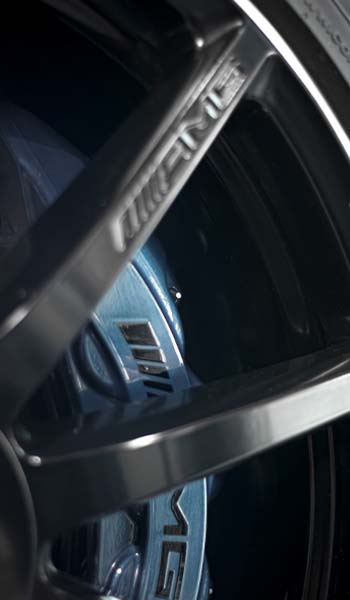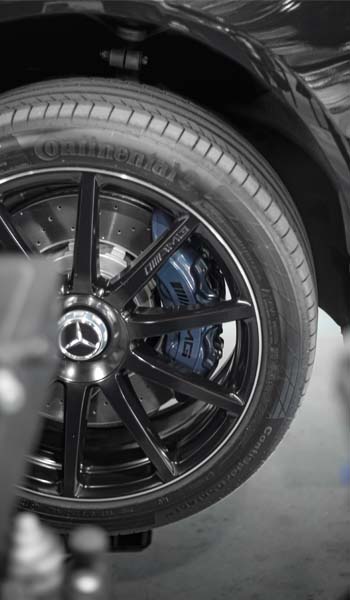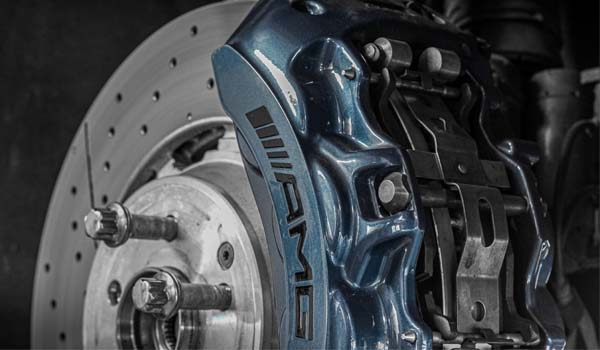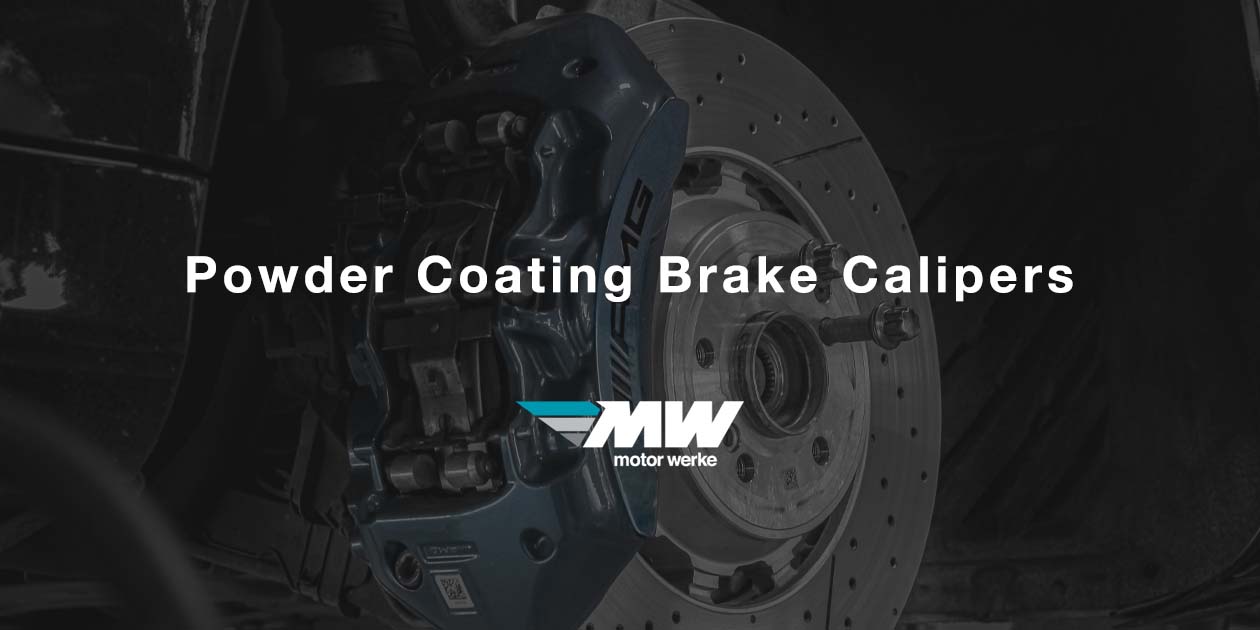Powder Coating Brake Calipers
With almost any project on a car there is both the easy way, and the proper way to do it. Brake caliper refinishing has long been one of the most popular ways to personalize your ride. Whether you’re trying to make your once-plain calipers stand out, or change up the factory powder coat on your high performance brakes, it is one of the most subtle yet effective changes you can make on a car.
Why Not Just Paint Them?
Caliper refinishing is one of those things that can be about as cheap and easy as you want it to be. You can go pick up a couple cans of spray paint, take your wheels off, mask the brake rotor, give your calipers a wipe down, hit them with a couple coats, and call it a day. This seems to be the preferred method for many high school kids, but as with many things they do, there is definitely a better way to go about it. There are many products being advertised specifically for painting calipers, but the reality is that paint will usually only last a few years at best, and won’t look very good for much of that time. Brakes go through a lot of punishment and experience a lot of heat, dust, and road debris, which even a caliper specific spray paint will have a tough time standing up to.

What is Powder Coating?
Powder coating is a very popular dry finishing method used on anything from water bottles to bicycles to brake calipers. The process is somewhat similar to painting, but creates a much more durable end result. The piece you are coating is hung from a rack, and has a ground wire clamped onto a non-obvious location. The spray gun is a special type that applies an electrostatic charge to the powder, which is a mixture of pigments, polymer resin systems, curing agents, and some other additives to help with flow and leveling. The electrostatic charge causes the powder to cling to the part in a thick, even coat, which will then go into an oven at around 440 degrees Fahrenheit. The temperature will vary, and some newer variations of powder coat can be baked at a lower temperature, but generally it is going to be upwards of 400 degrees. This essentially melts the powder into a perfectly uniform glaze-like coating that appears exactly like paint, but is far more resistant to heat, chipping, scratching, UV exposure and chemicals.
Powder Coating Brake Calipers The Right Way
To properly powder coat a set of calipers, they have to come fully off the vehicle, have the fluid drained, pistons and seals removed, sanded, prepped, cleaned, and cleaned again. Much like painting, a lot of the time spent on a powder coating is in the prep, as it really can make or break the end result.
One topic of much discussion is whether the caliper pistons, boots, and seals really need to be removed before powder coating, since brakes will see very hot temperatures on the car anyways. The thing is that they don’t see temperatures quite like they would in the oven. Under normal operating conditions, your brakes will rarely, if ever, get over 400 degrees, and even if they did, that heat is mainly on the rotor and pads. When brakes on a vehicle get hot they have a lot of airflow to bring the temps back down fairly quickly. Baking at well above the normal operating temperature for 20+ minutes is something that the rubber was simply not designed for, and could potentially damage the boots and seals. Some people will claim to have baked their calipers fully assembled without issue, but others have had their brake performance deteriorate as a result of leaking boots and seals. As the primary safety system, brakes are not something to mess around with. With all the work that has to go into powder coating, it’s easy enough to just go that extra step and fully disassemble the calipers, so you be absolutely sure it was done right.


Details
Very often you will see a logo such as Brembo, AMG, BMW’s M Sport, Ferrari, or many others on the outside of the caliper. This can be achieved with powder coat and a stencil, but to retain the perfect edges and detail of the logo it is more common to use a high temperature vinyl decal, and seal it under the clearcoat so there won’t be any peeling or lifting on the edges.
Custom Options
There are countless options when refinishing your calipers. You can simply recreate the factory finish and logo for a refreshed, OEM look, or you can customize your caliper with any number of colours and decal designs. The possibilities are nearly endless. For example, the AMG calipers pictured here have been colour-matched to the body colour of the customer’s Corvette. The end result is a very tasteful, elegant accent that compliments the rest of the S63 very well. To the unfamiliar passerby, it might even look like the factory finish, but to the owner, it’s a subtle nod to his weekend car on his daily driver.
Sold on Powder Coating?
Powder coating is obviously a far more complex process than spray paint, and certainly not something that you can do in the driveway, but the end result is a much more appealing, durable finish that will last many years to come. The applications of powder coating are not limited to calipers. Any metal part that can be removed from your car can be powder coated. This could mean engine bay parts such as intakes, brackets, or hardware, exterior accessories like wheels, exhaust tips, running boards, roof racks or off-road bumpers. If you’re thinking of refinishing your calipers or any other parts to bring some life and durability back into your car’s appearance, consider having them professionally powder coated. Our qualified staff can handle the process from start to finish, so all you need to worry about is choosing the perfect colour. Get in touch today!

